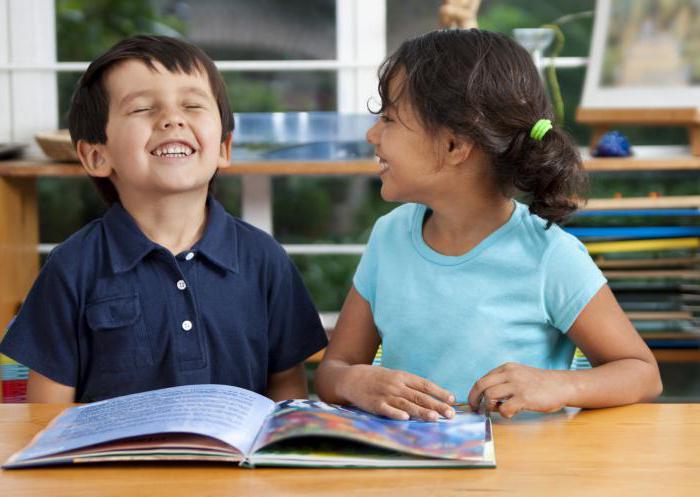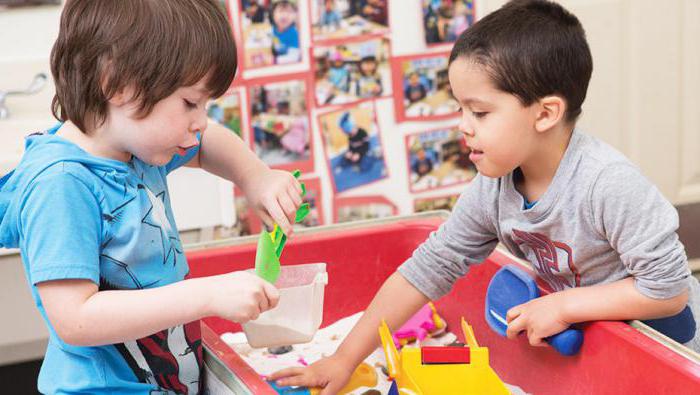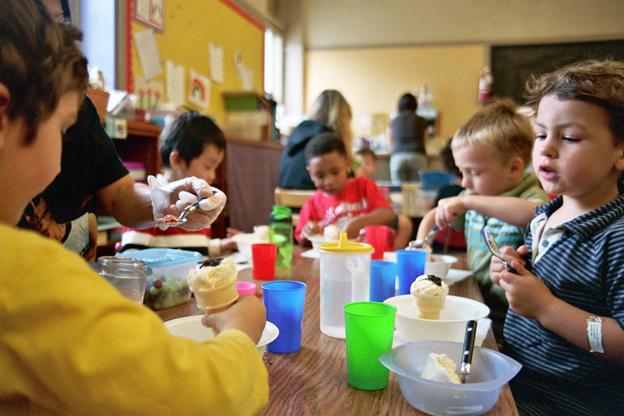In the article we analyze the basic services provided by preschool and school educational institutions. Consider the specifics of the activities of vocational education institutions.
Preschool education in the USSR
In the Soviet Union, pre-school educational institutions were in every microdistrict. Soviet education system assumed the presence of nursery groups, junior, senior, preparatory departments. For each age, certain programs were developed according to which children were prepared for school. Such educational institutions were free, there were no queues. Every child had the right to attend kindergarten.
The system of modern preschool education
Modern preschool educational institutions are significantly different from those in the 20th century. The economic crisis of the end of the last century led to a “demographic hole”; as a result, many kindergartens were closed. After mothers began to receive maternity capital for their second child in the country, the birth rate increased sharply. There was a problem with the placement of kids in children's educational institutions. In order for each child to use his constitutional rights, he was prepared for school, municipalities obliged to build new kindergartens. Now, every baby from the age of three must attend preschool educational institutions. Specially designed GEF (federal state educational standard) on which education, upbringing and development of children up to 7 years are carried out.

Private kindergartens
If parents do not want to take their child to a municipal preschool, they can take advantage of an alternative like a private kindergarten. Part of the costs for a child visiting such an institution will be borne by the state, part of the parental fee. Among the advantages of private gardens, one can distinguish a small occupancy of groups, additional classes in different directions, the availability of expensive modern equipment, etc.

Educational institutions for students
In any case, no matter what version of preschool education parents choose, after the child reaches the age of seven, the child goes to school. Modern educational institutions also work on special GEF. First-graders, in addition to the main holidays in autumn, spring, summer, additionally rest for 8 days in the third quarter (mid-February). Such short vacations are made to make it easier for new students to adapt to school life. The duration of the lesson for first graders is less: the lesson lasts only 30 minutes in the first half of the year, and 35 minutes in the second half of the year. Any municipal educational institution offers primary school students such an additional service as “stay in an extended day group”. Experienced teachers not only “look after” the children, but also help them to do their homework, organize interesting classes, contests, and excursions for them.

Additional education for primary school students
Primary school students are free to attend any circles and sections that this municipal educational institution offers. Dance studios, vocal groups, theater studios, sports sections - this is not the whole list of all additional free services that any student of the school can apply for.
Among the latest innovations of the Ministry of Education and Science of Russia are exams for primary school graduates. GEF of primary education, for which state educational institutions have been working for several years, contains serious requirements for graduates of 4 classes. Examination work, according to experts, will help children overcome the fear of the exam and exam, which are waiting for them in the 9th and 11th grades.

For ninth graders there is also a special offer: pre-profile training. Children get the opportunity to attend, in addition to training sessions, various courses for free: in physics, chemistry, literature. This innovation was introduced so that future graduates could make the right choice for their future profession. There is also a special course for ninth graders in vocational guidance. The course program involves getting to know different professions, performing tests to determine the direction of children's thinking, and identifying their interests.
Senior Learning
Under the new educational standards, high school students get the right to choose specialized education in various school subjects. Such a construction of the pedagogical process helps children who have decided on a future profession to get maximum knowledge in certain disciplines. In the 11th grade, children are waiting for final exams in two compulsory subjects: the Russian language, mathematics. At will, based on the abilities of the teenager, alternative disciplines are selected in which the student will pass exams.
An alternative to specialized education at school
Those graduates of grade 9 who do not want to attend school for another 2 years can choose educational institutions of vocational education. In addition to a diploma of secondary education, graduates of such institutions receive a profession. Recently, the popularity of vocational education institutions has increased significantly.

Conclusion
The education system offered in the Russian Federation is based on certain FSES standards that exist for each level. They determine the level of training and education of graduates of kindergarten, primary, secondary, high school. It is still difficult to talk about the effectiveness and efficiency of such innovations. Only after a certain period of time will it be possible to evaluate the result of innovative approaches in the domestic education system.






